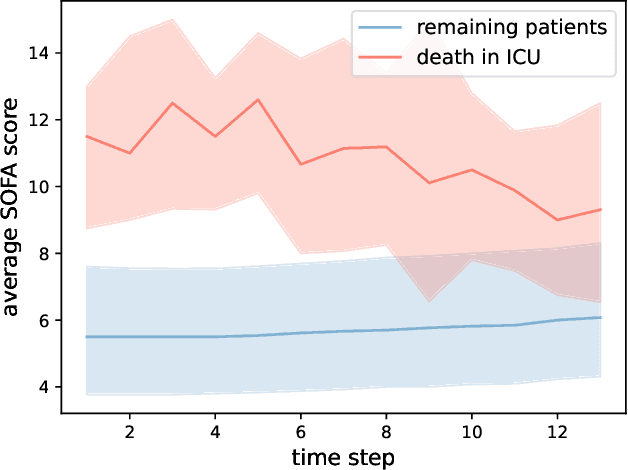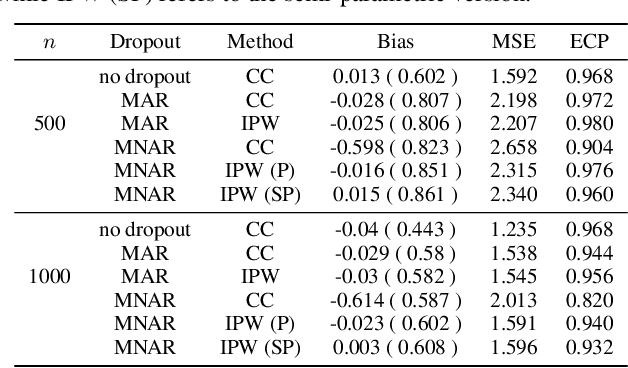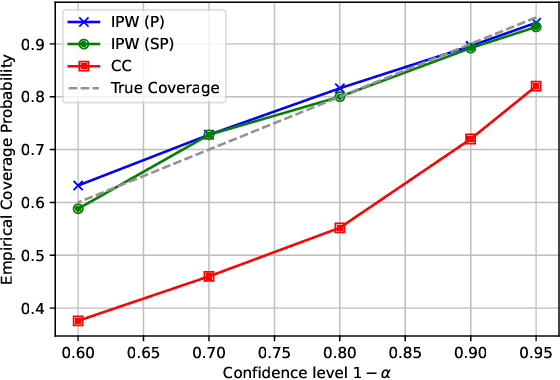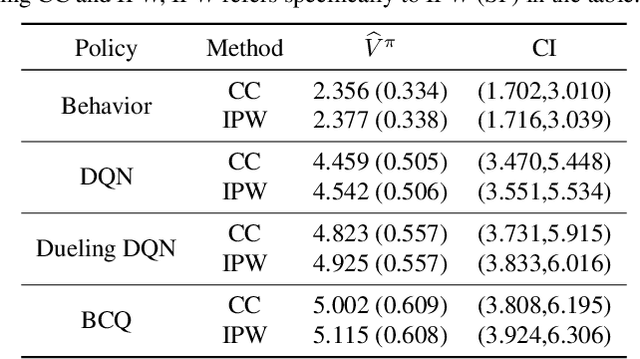Han Wang
SAIL-VL2 Technical Report
Sep 18, 2025Abstract:We introduce SAIL-VL2, an open-suite vision-language foundation model (LVM) for comprehensive multimodal understanding and reasoning. As the successor to SAIL-VL, SAIL-VL2 achieves state-of-the-art performance at the 2B and 8B parameter scales across diverse image and video benchmarks, demonstrating strong capabilities from fine-grained perception to complex reasoning. Its effectiveness is driven by three core innovations. First, a large-scale data curation pipeline with scoring and filtering strategies enhances both quality and distribution across captioning, OCR, QA, and video data, improving training efficiency. Second, a progressive training framework begins with a powerful pre-trained vision encoder (SAIL-ViT), advances through multimodal pre-training, and culminates in a thinking-fusion SFT-RL hybrid paradigm that systematically strengthens model capabilities. Third, architectural advances extend beyond dense LLMs to efficient sparse Mixture-of-Experts (MoE) designs. With these contributions, SAIL-VL2 demonstrates competitive performance across 106 datasets and achieves state-of-the-art results on challenging reasoning benchmarks such as MMMU and MathVista. Furthermore, on the OpenCompass leaderboard, SAIL-VL2-2B ranks first among officially released open-source models under the 4B parameter scale, while serving as an efficient and extensible foundation for the open-source multimodal community.
Efficient lattice field theory simulation using adaptive normalizing flow on a resistive memory-based neural differential equation solver
Sep 16, 2025Abstract:Lattice field theory (LFT) simulations underpin advances in classical statistical mechanics and quantum field theory, providing a unified computational framework across particle, nuclear, and condensed matter physics. However, the application of these methods to high-dimensional systems remains severely constrained by several challenges, including the prohibitive computational cost and limited parallelizability of conventional sampling algorithms such as hybrid Monte Carlo (HMC), the substantial training expense associated with traditional normalizing flow models, and the inherent energy inefficiency of digital hardware architectures. Here, we introduce a software-hardware co-design that integrates an adaptive normalizing flow (ANF) model with a resistive memory-based neural differential equation solver, enabling efficient generation of LFT configurations. Software-wise, ANF enables efficient parallel generation of statistically independent configurations, thereby reducing computational costs, while low-rank adaptation (LoRA) allows cost-effective fine-tuning across diverse simulation parameters. Hardware-wise, in-memory computing with resistive memory substantially enhances both parallelism and energy efficiency. We validate our approach on the scalar phi4 theory and the effective field theory of graphene wires, using a hybrid analog-digital neural differential equation solver equipped with a 180 nm resistive memory in-memory computing macro. Our co-design enables low-cost computation, achieving approximately 8.2-fold and 13.9-fold reductions in integrated autocorrelation time over HMC, while requiring fine-tuning of less than 8% of the weights via LoRA. Compared to state-of-the-art GPUs, our co-design achieves up to approximately 16.1- and 17.0-fold speedups for the two tasks, as well as 73.7- and 138.0-fold improvements in energy efficiency.
Beyond Motion Cues and Structural Sparsity: Revisiting Small Moving Target Detection
Sep 09, 2025Abstract:Small moving target detection is crucial for many defense applications but remains highly challenging due to low signal-to-noise ratios, ambiguous visual cues, and cluttered backgrounds. In this work, we propose a novel deep learning framework that differs fundamentally from existing approaches, which often rely on target-specific features or motion cues and tend to lack robustness in complex environments. Our key insight is that small target detection and background discrimination are inherently coupled, even cluttered video backgrounds often exhibit strong low-rank structures that can serve as stable priors for detection. We reformulate the task as a tensor-based low-rank and sparse decomposition problem and conduct a theoretical analysis of the background, target, and noise components to guide model design. Building on these insights, we introduce TenRPCANet, a deep neural network that requires minimal assumptions about target characteristics. Specifically, we propose a tokenization strategy that implicitly enforces multi-order tensor low-rank priors through a self-attention mechanism. This mechanism captures both local and non-local self-similarity to model the low-rank background without relying on explicit iterative optimization. In addition, inspired by the sparse component update in tensor RPCA, we design a feature refinement module to enhance target saliency. The proposed method achieves state-of-the-art performance on two highly distinct and challenging tasks: multi-frame infrared small target detection and space object detection. These results demonstrate both the effectiveness and the generalizability of our approach.
LLM-based Relevance Assessment for Web-Scale Search Evaluation at Pinterest
Sep 03, 2025



Abstract:Relevance evaluation plays a crucial role in personalized search systems to ensure that search results align with a user's queries and intent. While human annotation is the traditional method for relevance evaluation, its high cost and long turnaround time limit its scalability. In this work, we present our approach at Pinterest Search to automate relevance evaluation for online experiments using fine-tuned LLMs. We rigorously validate the alignment between LLM-generated judgments and human annotations, demonstrating that LLMs can provide reliable relevance measurement for experiments while greatly improving the evaluation efficiency. Leveraging LLM-based labeling further unlocks the opportunities to expand the query set, optimize sampling design, and efficiently assess a wider range of search experiences at scale. This approach leads to higher-quality relevance metrics and significantly reduces the Minimum Detectable Effect (MDE) in online experiment measurements.
Collaborative-Online-Learning-Enabled Distributionally Robust Motion Control for Multi-Robot Systems
Aug 24, 2025Abstract:This paper develops a novel COllaborative-Online-Learning (COOL)-enabled motion control framework for multi-robot systems to avoid collision amid randomly moving obstacles whose motion distributions are partially observable through decentralized data streams. To address the notable challenge of data acquisition due to occlusion, a COOL approach based on the Dirichlet process mixture model is proposed to efficiently extract motion distribution information by exchanging among robots selected learning structures. By leveraging the fine-grained local-moment information learned through COOL, a data-stream-driven ambiguity set for obstacle motion is constructed. We then introduce a novel ambiguity set propagation method, which theoretically admits the derivation of the ambiguity sets for obstacle positions over the entire prediction horizon by utilizing obstacle current positions and the ambiguity set for obstacle motion. Additionally, we develop a compression scheme with its safety guarantee to automatically adjust the complexity and granularity of the ambiguity set by aggregating basic ambiguity sets that are close in a measure space, thereby striking an attractive trade-off between control performance and computation time. Then the probabilistic collision-free trajectories are generated through distributionally robust optimization problems. The distributionally robust obstacle avoidance constraints based on the compressed ambiguity set are equivalently reformulated by deriving separating hyperplanes through tractable semi-definite programming. Finally, we establish the probabilistic collision avoidance guarantee and the long-term tracking performance guarantee for the proposed framework. The numerical simulations are used to demonstrate the efficacy and superiority of the proposed approach compared with state-of-the-art methods.
Symmetric Behavior Regularization via Taylor Expansion of Symmetry
Aug 06, 2025



Abstract:This paper introduces symmetric divergences to behavior regularization policy optimization (BRPO) to establish a novel offline RL framework. Existing methods focus on asymmetric divergences such as KL to obtain analytic regularized policies and a practical minimization objective. We show that symmetric divergences do not permit an analytic policy as regularization and can incur numerical issues as loss. We tackle these challenges by the Taylor series of $f$-divergence. Specifically, we prove that an analytic policy can be obtained with a finite series. For loss, we observe that symmetric divergences can be decomposed into an asymmetry and a conditional symmetry term, Taylor-expanding the latter alleviates numerical issues. Summing together, we propose Symmetric $f$ Actor-Critic (S$f$-AC), the first practical BRPO algorithm with symmetric divergences. Experimental results on distribution approximation and MuJoCo verify that S$f$-AC performs competitively.
AnimeColor: Reference-based Animation Colorization with Diffusion Transformers
Jul 27, 2025Abstract:Animation colorization plays a vital role in animation production, yet existing methods struggle to achieve color accuracy and temporal consistency. To address these challenges, we propose \textbf{AnimeColor}, a novel reference-based animation colorization framework leveraging Diffusion Transformers (DiT). Our approach integrates sketch sequences into a DiT-based video diffusion model, enabling sketch-controlled animation generation. We introduce two key components: a High-level Color Extractor (HCE) to capture semantic color information and a Low-level Color Guider (LCG) to extract fine-grained color details from reference images. These components work synergistically to guide the video diffusion process. Additionally, we employ a multi-stage training strategy to maximize the utilization of reference image color information. Extensive experiments demonstrate that AnimeColor outperforms existing methods in color accuracy, sketch alignment, temporal consistency, and visual quality. Our framework not only advances the state of the art in animation colorization but also provides a practical solution for industrial applications. The code will be made publicly available at \href{https://github.com/IamCreateAI/AnimeColor}{https://github.com/IamCreateAI/AnimeColor}.
Off-Policy Evaluation Under Nonignorable Missing Data
Jul 09, 2025



Abstract:Off-Policy Evaluation (OPE) aims to estimate the value of a target policy using offline data collected from potentially different policies. In real-world applications, however, logged data often suffers from missingness. While OPE has been extensively studied in the literature, a theoretical understanding of how missing data affects OPE results remains unclear. In this paper, we investigate OPE in the presence of monotone missingness and theoretically demonstrate that the value estimates remain unbiased under ignorable missingness but can be biased under nonignorable (informative) missingness. To retain the consistency of value estimation, we propose an inverse probability weighted value estimator and conduct statistical inference to quantify the uncertainty of the estimates. Through a series of numerical experiments, we empirically demonstrate that our proposed estimator yields a more reliable value inference under missing data.
Dynamic Double Space Tower
Jun 13, 2025



Abstract:The Visual Question Answering (VQA) task requires the simultaneous understanding of image content and question semantics. However, existing methods often have difficulty handling complex reasoning scenarios due to insufficient cross-modal interaction and capturing the entity spatial relationships in the image.\cite{huang2023adaptive}\cite{liu2021comparing}\cite{guibas2021adaptive}\cite{zhang2022vsa}We studied a brand-new approach to replace the attention mechanism in order to enhance the reasoning ability of the model and its understanding of spatial relationships.Specifically, we propose a dynamic bidirectional spatial tower, which is divided into four layers to observe the image according to the principle of human gestalt vision. This naturally provides a powerful structural prior for the spatial organization between entities, enabling the model to no longer blindly search for relationships between pixels but make judgments based on more meaningful perceptual units. Change from "seeing images" to "perceiving and organizing image content".A large number of experiments have shown that our module can be used in any other multimodal model and achieve advanced results, demonstrating its potential in spatial relationship processing.Meanwhile, the multimodal visual question-answering model July trained by our method has achieved state-of-the-art results with only 3B parameters, especially on the question-answering dataset of spatial relations.
It's Not the Target, It's the Background: Rethinking Infrared Small Target Detection via Deep Patch-Free Low-Rank Representations
Jun 12, 2025Abstract:Infrared small target detection (IRSTD) remains a long-standing challenge in complex backgrounds due to low signal-to-clutter ratios (SCR), diverse target morphologies, and the absence of distinctive visual cues. While recent deep learning approaches aim to learn discriminative representations, the intrinsic variability and weak priors of small targets often lead to unstable performance. In this paper, we propose a novel end-to-end IRSTD framework, termed LRRNet, which leverages the low-rank property of infrared image backgrounds. Inspired by the physical compressibility of cluttered scenes, our approach adopts a compression--reconstruction--subtraction (CRS) paradigm to directly model structure-aware low-rank background representations in the image domain, without relying on patch-based processing or explicit matrix decomposition. To the best of our knowledge, this is the first work to directly learn low-rank background structures using deep neural networks in an end-to-end manner. Extensive experiments on multiple public datasets demonstrate that LRRNet outperforms 38 state-of-the-art methods in terms of detection accuracy, robustness, and computational efficiency. Remarkably, it achieves real-time performance with an average speed of 82.34 FPS. Evaluations on the challenging NoisySIRST dataset further confirm the model's resilience to sensor noise. The source code will be made publicly available upon acceptance.
 Add to Chrome
Add to Chrome Add to Firefox
Add to Firefox Add to Edge
Add to Edge